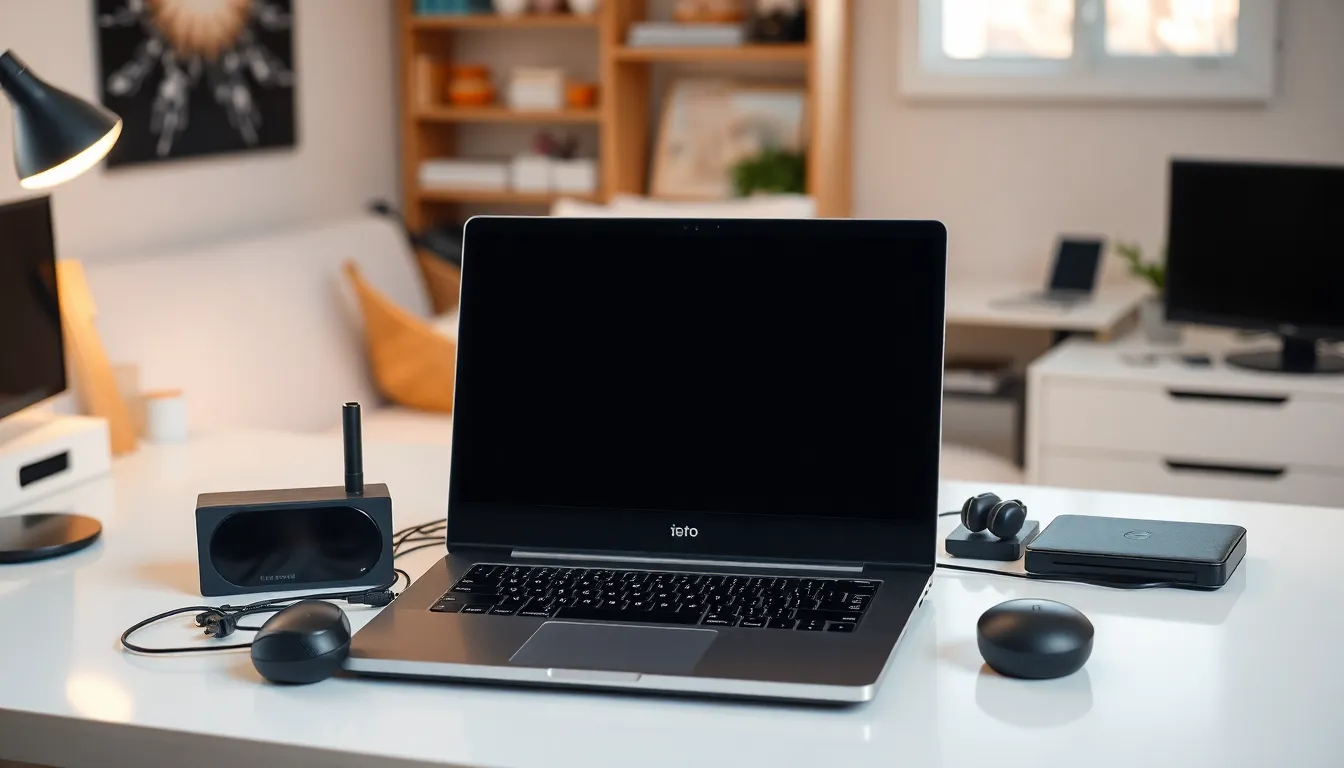Table of Contents
ToggleIn a world where gadgets are as essential as morning coffee, understanding their performance can make or break your tech experience. From smartphones that can practically predict your next move to laptops that boot up faster than you can say “Wi-Fi,” performance is the name of the game. But what truly separates the tech titans from the wannabes?
Overview of Gadget Performance
Gadget performance plays a crucial role in the overall user experience. Key factors include processing speed, storage capacity, and battery life. High-performance gadgets often feature advanced hardware specifications, allowing users to execute multiple tasks seamlessly.
For instance, smartphones with powerful processors enhance gaming and multimedia functionalities. Devices equipped with sufficient RAM and fast storage options demonstrate improved loading times and application responsiveness. Battery life significantly influences performance, as longer-lasting devices provide uninterrupted use throughout the day.
Expectations for gadget performance are ever-increasing, particularly with the emergence of new technology trends. Many consumers prioritize features such as high-resolution displays, processing power, and connectivity options. Performance benchmarks regularly assess devices, making comparisons between competitors more straightforward.
Assessing gadget performance involves looking at specific metrics. Benchmark ratings guide consumers in identifying top contenders in the market. Real-world usage scenarios reveal how devices perform under various conditions, from gaming to productivity tasks.
People find that high-performing gadgets often lead to increased satisfaction and productivity. Essential features, such as smooth user interfaces and fast data processing, enhance everyday tasks. Those investing in gadgets prioritizing performance benefit from long-term usability and satisfaction.
Factors Affecting Gadget Performance

Gadget performance hinges on multiple factors. Understanding these elements facilitates better purchasing decisions.
Hardware Specifications
Performance highly relies on hardware specifications. The processor type dictates computation speed, significantly influencing multitasking capabilities. RAM capacity supports running numerous applications simultaneously, affecting overall responsiveness. Storage options, like SSDs versus HDDs, impact loading times and data access speeds. Graphics processing units enhance visual rendering for graphics-intensive applications, further elevating user experiences. Devices equipped with advanced hardware often exhibit superior performance, making them preferable for demanding tasks.
Software Optimization
Software optimization plays a crucial role in gadget performance. Operating systems that receive regular updates improve stability and efficiency, allowing devices to run applications smoothly. Background processes consume resources, so efficient software management reduces their impact on performance. Applications designed for specific hardware configurations optimize functionality, leading to quicker response times. A streamlined user interface enhances navigation, contributing to an overall positive experience. Many manufacturers prioritize software enhancements, recognizing their impact on user satisfaction.
Common Performance Metrics
Gadget performance metrics provide crucial insights into device capabilities. Understanding these metrics helps users make informed decisions when selecting technology.
Processing Speed
Processing speed measures how quickly a device performs tasks. A powerful processor enables smooth multitasking and efficient handling of demanding applications. Many devices utilize multi-core processors to enhance speed and performance. For example, smartphones equipped with octa-core processors can manage intensive gaming and multimedia tasks effortlessly. Metrics like gigahertz (GHz) indicate the processor’s clock speed, with higher values typically representing faster performance. Benchmark scores from reliable sources such as Geekbench and AnTuTu reveal comparative processing speeds among devices, guiding consumers in selecting high-performance options.
Battery Life
Battery life indicates how long a device operates without needing a recharge. High-capacity batteries enhance user experience by minimizing interruptions. Features like fast charging technology also improve overall convenience. For instance, top smartphones can last over 12 hours during continuous usage, showcasing excellent endurance. Battery performance varies significantly based on device settings and usage patterns, so understanding these factors plays a crucial role in maximizing battery efficiency. Real-world tests often reveal battery longevity in scenarios like video streaming or gaming, further helping users gauge the suitability of a gadget for their lifestyle.
Real-World Performance Examples
Gadgets showcase their capabilities in real-world scenarios. Observing performance in everyday tasks highlights the strengths and weaknesses of various devices.
Smartphones
Smartphones like the iPhone 14 Pro exhibit impressive performance during multitasking. With a 6-core A16 Bionic chip, users experience smooth app transitions and rapid loading times. Flagship models often sport at least 128 GB of storage, facilitating the management of large files and applications. In daily use, impressive battery life often lasts over 24 hours, supporting intensive gaming and streaming sessions. Models such as Samsung Galaxy S22 further enhance user experience with adaptive refresh rates, improving responsiveness during scrolling and gaming.
Laptops
Laptops such as the Dell XPS 13 perform well in diverse environments. Fitted with Intel’s latest processors, they efficiently handle demanding tasks like video editing and 3D rendering. Most configurations include 16 GB of RAM, enabling seamless switching between multiple applications. Performance metrics, such as the 9-10 hours of battery life, provide users with the flexibility to work on the go. Features like high-resolution displays and improved graphics cards found in the MacBook Pro also contribute to enhanced visuals, making these devices ideal for both casual users and professionals.
Understanding gadget performance is essential in navigating today’s tech landscape. High-performing devices not only elevate user experience but also meet the growing demands for speed and efficiency. As technology evolves manufacturers are focusing on enhancing hardware and software to deliver seamless multitasking and improved functionality.
By prioritizing key performance metrics consumers can make informed decisions that align with their needs. Whether it’s for gaming productivity or everyday tasks the right gadget can significantly enhance satisfaction. As users continue to seek out devices that offer superior performance it’s clear that investing in quality technology pays off in the long run.




